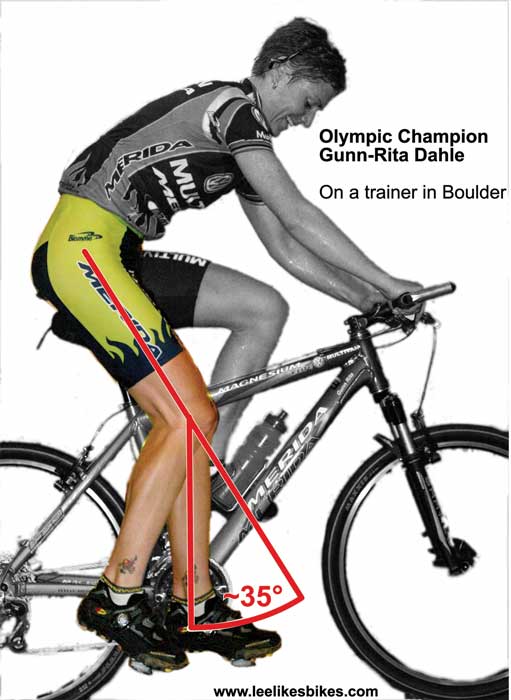Short track and saddle height

Lee, Dude your clinics rock! I’m ridding so much better then I ever have and thinking about the sick skills you teach every time I’m ripping singletrack…Attack Position! I’ve got a question regarding Short Track and Saddle Height.
I’ve had a bike fit and the shop set the saddle height (and body position) for correct comfort as well to rock cross country racing and for optimal power output (at least that’s what i thought it was for).
When I raced Short Track I lowered my saddle because I was concerned about the cornering. I wanted to be able to rip the corners faster then the other racers and also absorb all the little kickers. It worked pretty good as I passed several racers in the corners and when I wasn’t behind someone I was able to rock the corners and absorb the kickers fast (thanks to applying your mad mtb clinic skills).
Anyways, my question is am I sacrificing efficient power output by lowering my saddle during a $hort Track race?
Thanks dude, looking fwd to clinic #3. Happy Trails
-Farid
|
The more you click, the more I can post. Lee Likes Groceries dot com! |
.jpg
Yeah Farid!
I really enjoyed teaching you and your crew. Great to know you’re out rocking the new style.
This is such a great question. I used to pound road miles with my seat as high as possible, but my saddles have been getting lower over the years. I now pedal from farther back on the seat, and I try to use my hips more than my quads. I feel just as strong as in my road geek days, but my knees are healthier, and my bikes handle better.
Quick answer
I bet your seat is too high. Most of the meatballs who fit bikes are working off old/traditional ideas. The biggest is that everyone should have a 10-15 degree bend in their knees.
– Try a 30-degree bend in your knee. Jon Watt is a pro racer and a biomechanical engineer who used to do bike fits at the Boulder Center for Sports Medicine. Jon says a 30-degree bend typically gives the best balance of power and knee health.
– A slightly lower saddle is faster overall because of the corners and bumps. You can ride more athletically.
– Here’s a test: I bet you have a HRM. Maintain a consistent effort. Do some laps at Height A and Height B. Switch back and forth in random order. Don’t think about your seat. Just ride. Compare times. More important: Compare how it feels.
Anecdotal evidence
The other day I met my friend Jason Emmanuel for an XC ride. He’s a rep for Specialized, and he’s been riding road and mountain bikes forever. He’s an experienced, strong fellow; a former road racer and now a solid all-around rider. When Jason got his new road bike, he followed the classic rule: Set your seat so your heel barely touches pedal at the bottom of the stroke, then ride.
The bike felt fine, but Jason recently went to Andy Pruit here in Boulder for a scientific bike fit. Andy took a quick look at Jason’s bike and said, “Dude, you’re not that tall.” While Jason spun on a trainer at 125 watts (a mellow pace), Andy took some measurements then lowered Jason’s saddle by 1.5cm — that’s a lot! And get this:
With the saddle 1.5cm lower than it’s been for years, at the same heart rate, Jason made 150 watts! That’s a 20% increase! That is huge. Not only does the lower height yield more power, it noticeably improves handling.
BTW: Jason did the heel test with his street shoes. He says the thick soles made that 1.5cm difference.
Play with it
You are not a hamster on a wheel — you’re an athlete! Go out and experiment. Try different setups. Test. Measure. Play!

Comments are closed.